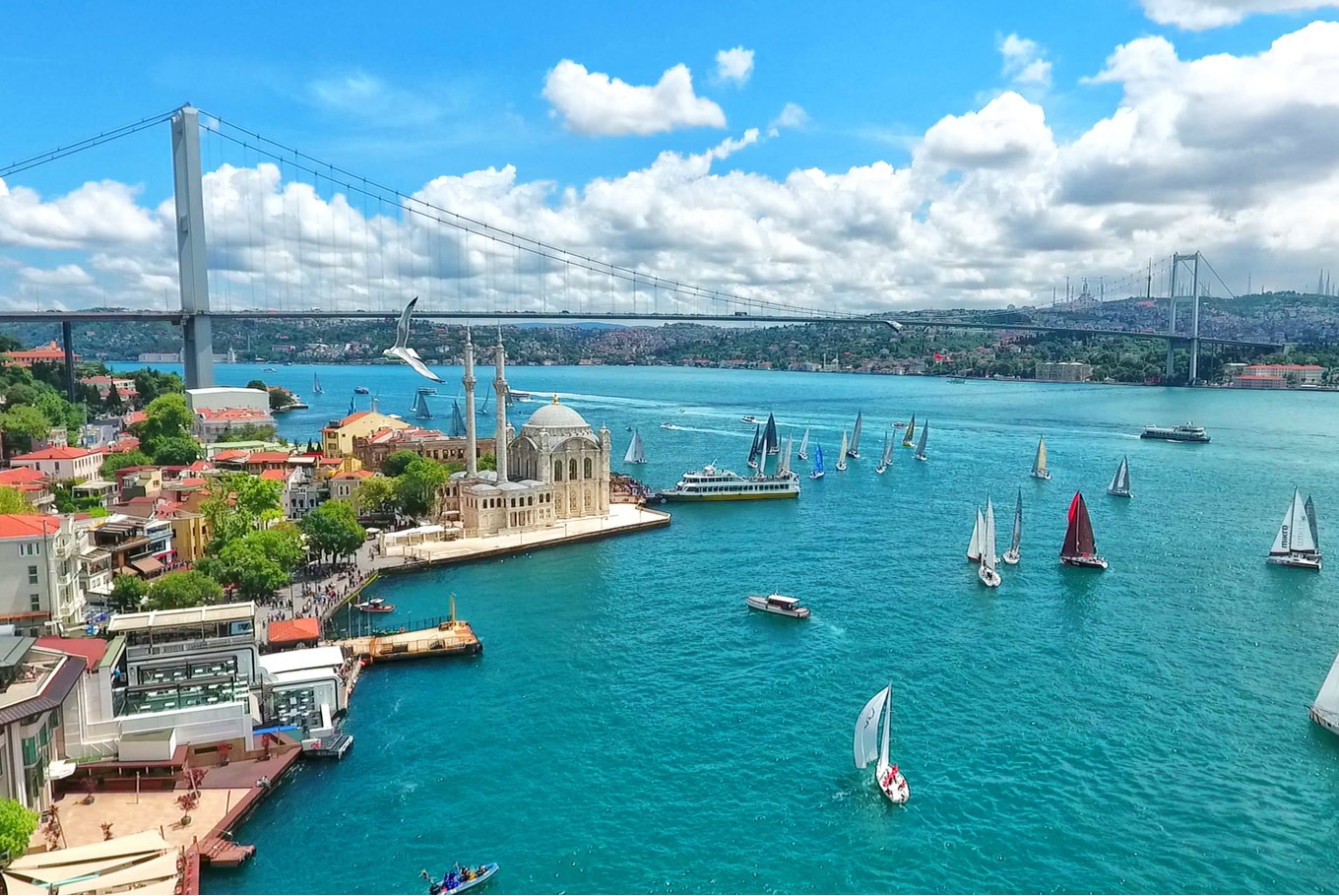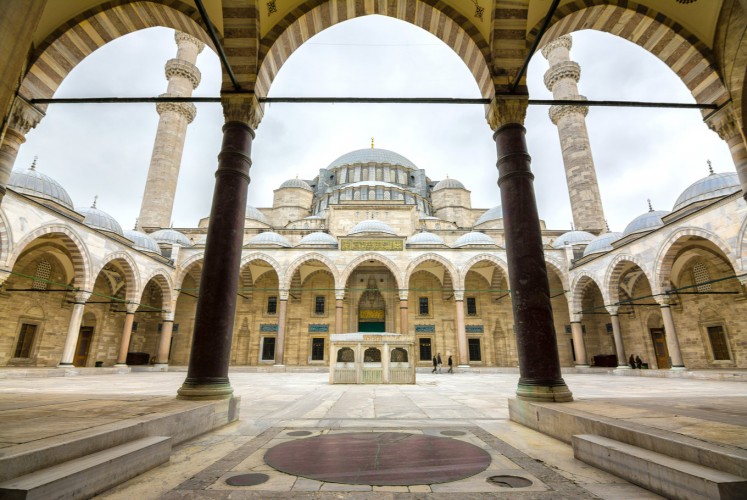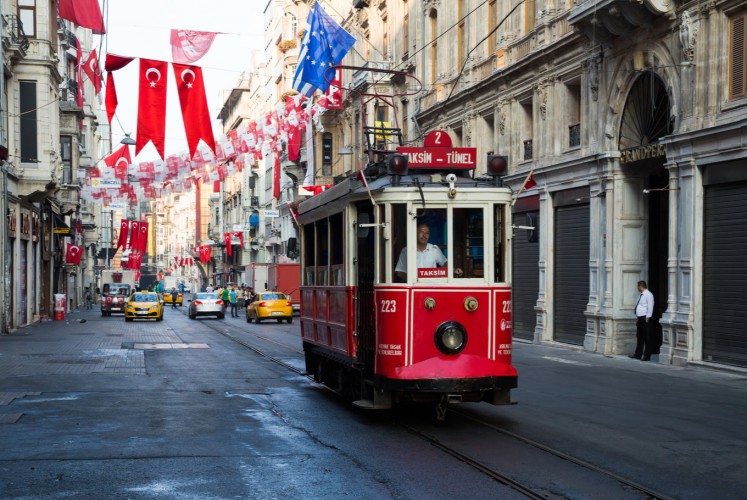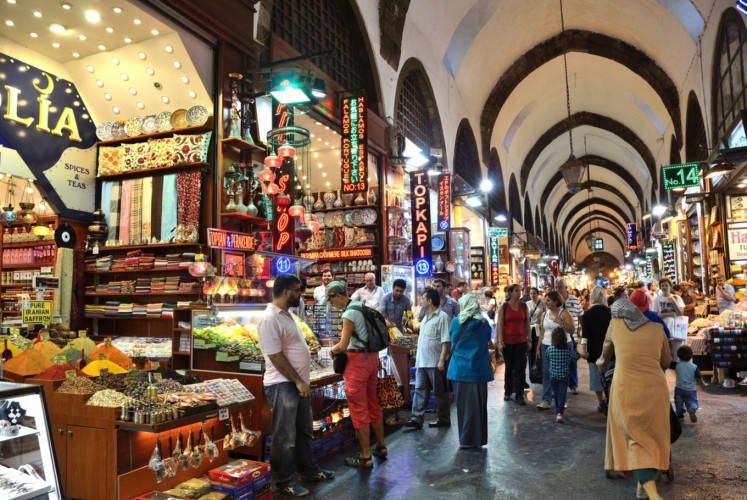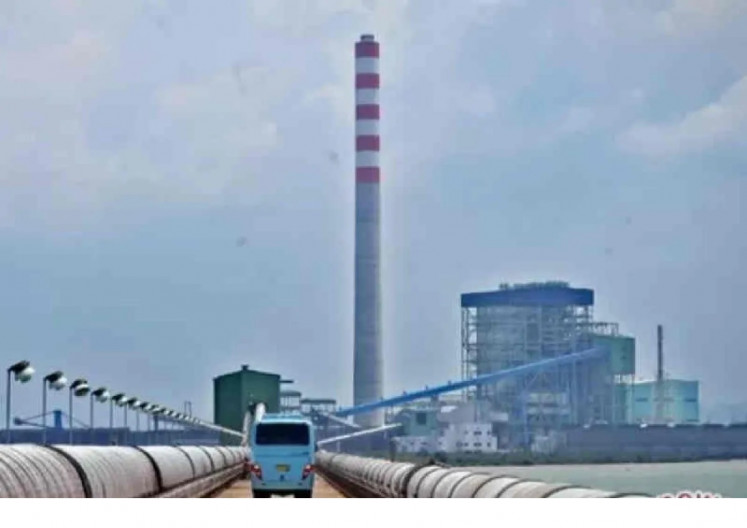Popular Reads
Top Results
Can't find what you're looking for?
View all search resultsPopular Reads
Top Results
Can't find what you're looking for?
View all search resultsA walk between continents in Turkey
There is so much more to Istanbul than the cliché it is a city where the East meets the West.
Change text size
Gift Premium Articles
to Anyone
A
group of journalists, including The Jakarta Post, was invited by Turkish Airlines to learn about the airline and explore Istanbul. Here is the report.
A cold winter breeze greeted me as I was stepping out of Ataturk International Airport in Istanbul, Turkey.
I heard the best time to explore the city is in the summer, when colorful tulips are in full bloom and cruise ships on the 31-kilometer long Bosphorus Strait, which connects the Black Sea with the Sea of Marmara while splitting Istanbul into two continents — Asia and Europe, operate in full swing.
But I was excited — not just because I finally got out of the airport to explore the city, but also because Istanbul has fascinated me for a while.
Istanbul, as the seat of three empires — the Byzantine, the Roman and the Ottoman empires, has been featured in many films, from James Bond’s Skyfallto Taken 2. Its world-renowned historical sites, from the Hagia Sophia and the Sultanahmet Mosque (also known as the Blue Mosque) to the Topkapi Palace, are featured in many books, including Dan Brown’s bestseller Inferno.
Two suspension bridges connect the Asian and European sides. The European side is the city’s busiest and it is where some of Istanbul’s signature spots are located, while the Asian side feels much more relaxed, with fewer hotels and tourist attractions.
“Every day, I cross two continents to work,” said our tour guide Hakan Baykara.
Traces of the past are everywhere yet the historically rich city continues to grow and transform into a cosmopolitan city that serves as a melting pot of different peoples and cultures.
The courtyard within the Suleymaniye Mosque. (Shutterstock.com/File)The city’s largest mosque, the Suleymaniye Mosque, named after Suleyman the Magnificent, was crowded with tourists inside and outside its vast complex.
Baykara said the mosque was built in the 16th century by great Ottomanarchitect Mimar Sinan, hence its reputation as a prime example of Ottoman Islamic architecture. “The mosque complex is very vast and it includes a hospital, kitchen, library, madrasa and hamam [Turkish bath],” he said.
Those wanting to capture a panoramic view of the city should go to the Galata Tower, one of the tallest — 63 meters high — and oldest buildings in Istanbul, which is located near the Taksim Square where a classic red tram still roams the popular shopping district.
First built as part of a defense wall in the 14th century, the tower was restored and opened to the public in 1967. “Now, there’s a cafeteria on top of the tower,” explained Turkish Airlines regional commercial manager Nevin Ekiz Bolat.
A classic tram passes through Istanbul’s popular Taksim Square. (Shutterstock.com/Dmitry Birin)Tourist spots are not the only must-visit places in Istanbul. Witnessing the mystical ritual of the Mevlevi Order, whose whirling dance has been declared a UNESCO Heritage of Humanity, leveled up the experience.
For 30 minutes, the audience was captivated by fluid whirling movements and a spiritual rhythm staged at the Hodjapsha Cultural Center, a building that was transformed from a large 15th century hamam.
Whirling dance is a mystical ritual of the Mevlevi Order, also known as Sufi whirling or Semazen. (Shutterstock.com/Turkey Photo)Istanbul’s bazaars, which remain popular despite the presence of modern shopping malls across the city, are perfect not only to shop for anything from carpets and ceramics to jewelries, but it is also a great place to experience the city and its people.
The Grand Bazaar is one of the oldest and largest covered markets in the world and it gets bigger and larger throughout the centuries, spanning an area of over 31,000 square meters with its 3,000-plus shops, 60-plus alleys as well as cafes and restaurants.
At first glance, the bazaar feels a bit overwhelming as it resembles a giant labyrinth that may be a bit complicated to navigate for a first-time visitor, especially as it is visited by some 400,000 people every day.
But the shops inside are mostly grouped according to the goods they sell and marked with numbers, and English is widely spoken if you need to ask for directions.
“Remember the gate you entered in if you want to go back the same way you arrived,” advised Bolat.
The Spice Bazaar (Shutterstock.com/Ovchinnikova Irina)Another popular bazaar is the Egyptian Bazaar, also known as the Spice Bazaar, which has a fewer number of shops but is no less captivating, with amazing smells coming from the displayed spices, herbs, medicinal plants, dried fruits, sweets and teas.
The owner of Cikita, one of the shops at the Spice Bazaar, invited us in to have tea. “This tea is specially made by us, available only in our shop,” he said while serving warm, organic eucalyptus mint lemon tea in a tulip-shaped glass.
He then quickly showed me framed photos of him with top leaders, including Singapore’s late former prime minister Lee Kuan Yew, that he placed high on the wall.
“Indonesian celebrities also shop in my place,” he said before pointing to another part of the wall, which
featured photos of him posing with, among others, emcee Indra Bekti.
As I sipped my tea and tasted its refreshing flavor while breathing in its minty aroma, I decided to bring the tea back home as a sweet reminder of my trip to Istanbul.

